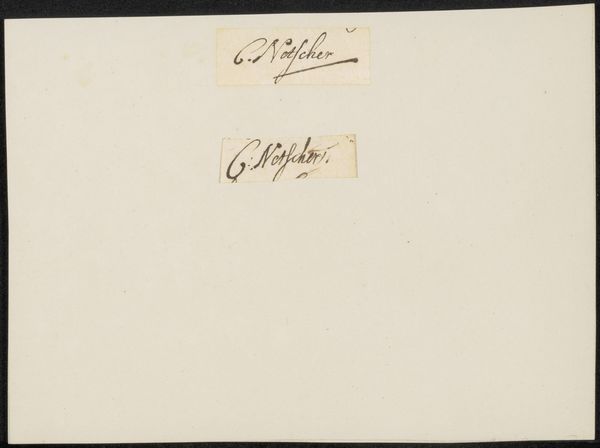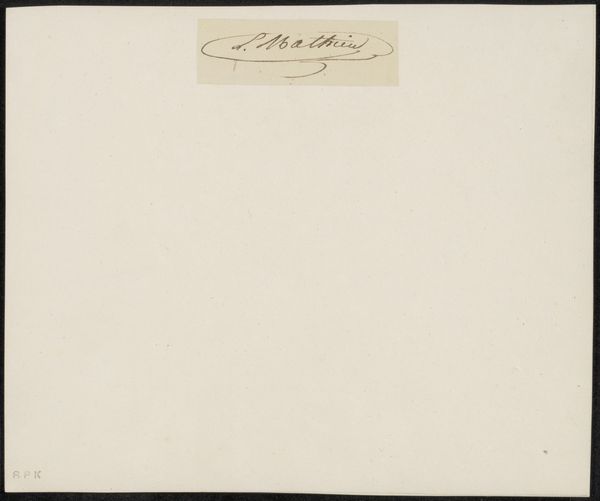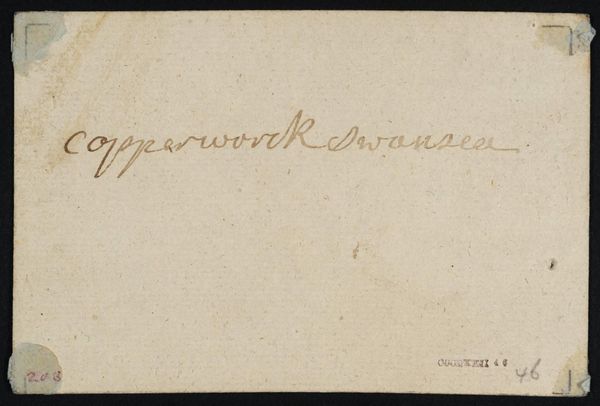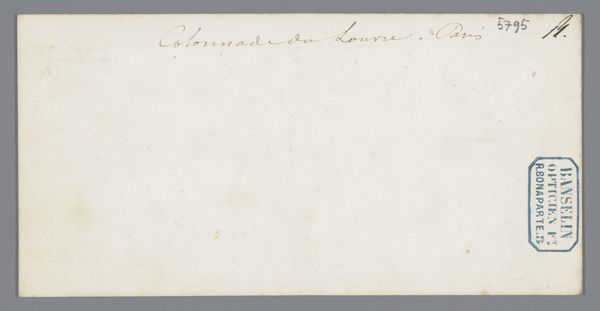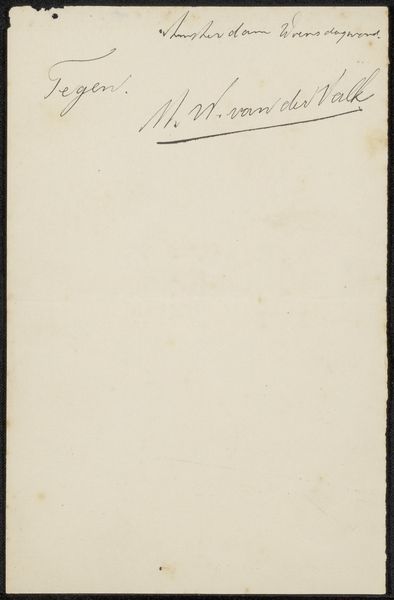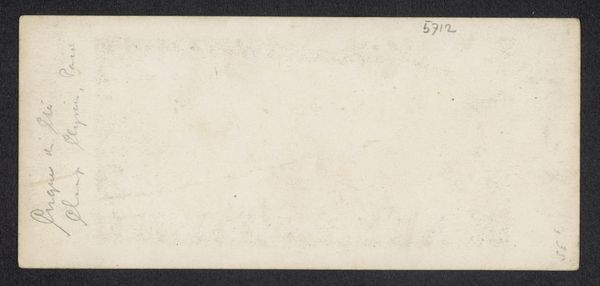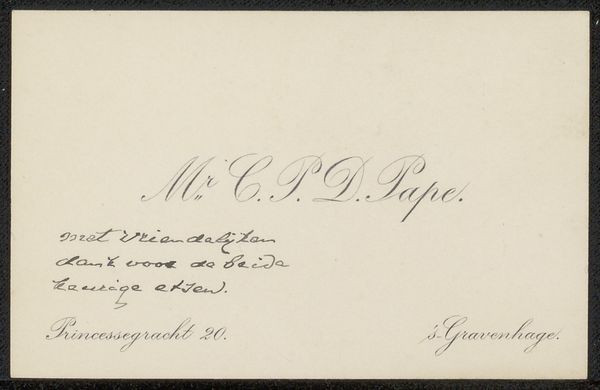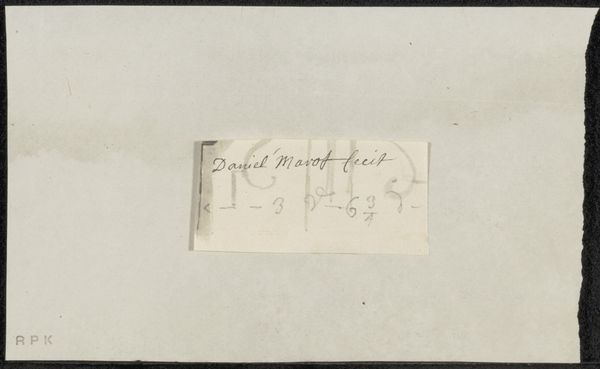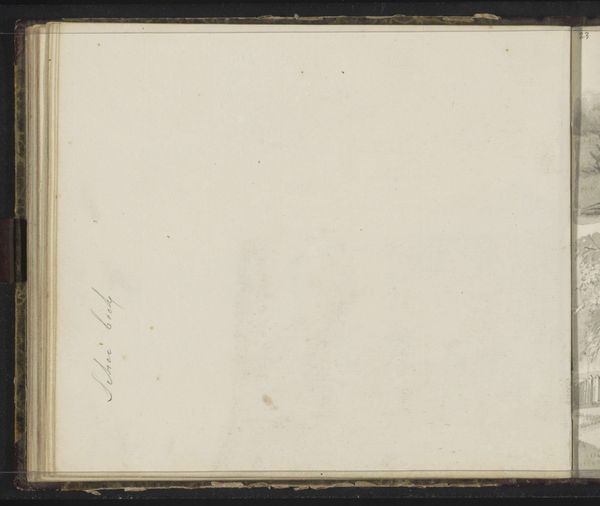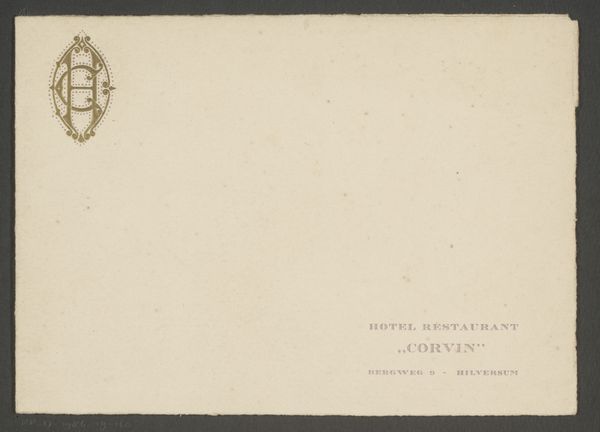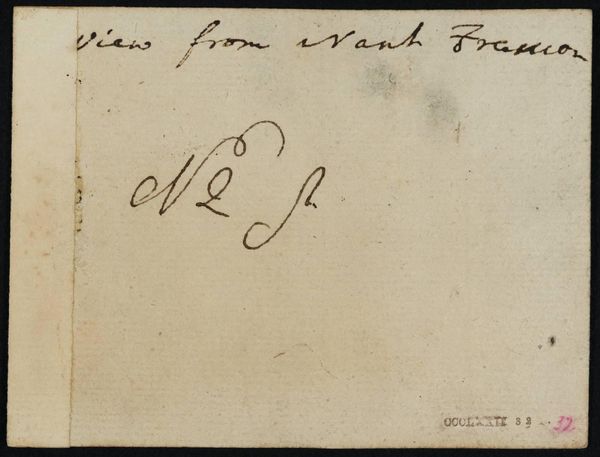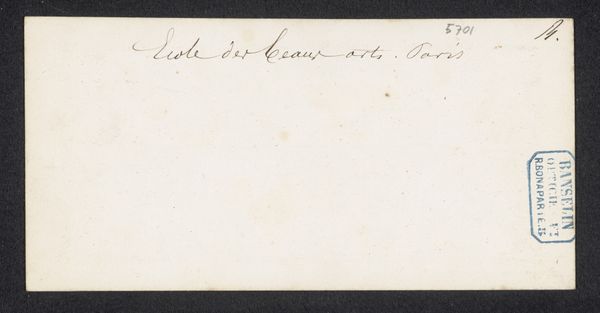
#
script typography
#
hand drawn type
#
hand lettering
#
personal sketchbook
#
hand-drawn typeface
#
ink drawing experimentation
#
pen-ink sketch
#
pen work
#
sketchbook drawing
#
sketchbook art
Copyright: Rijks Museum: Open Domain
Curator: Here we have "Handtekening van Coenraet Roepel," or "Signature of Coenraet Roepel," dating from the late 17th to mid-18th century. It's a delicate ink drawing, likely from a sketchbook. Editor: It's surprisingly subtle. I was expecting something bolder given the period, but it has a certain…fragility? The faintness of the ink and the amount of blank space around the name suggests a preliminary exploration of form rather than a declaration. Curator: That's astute. Roepel was a fruit and flower painter, part of a lineage of artists. A study like this would have been part of his broader artistic practice, which was itself tied to Dutch social structures and the market for still-life paintings. These were popular commissions among the wealthy merchant class. Editor: So this name—his signature, essentially—would have held considerable value, linked to his artistic reputation and earning potential. You can almost feel him working out the pressure of the pen on paper, testing the materiality of ink and surface as it turns into recognizable letters, then a valuable name. The hand made typeface. Curator: Exactly. And remember, artists like Roepel were often affiliated with guilds, networks that heavily influenced the art market. This signature is an assertion of identity within that framework. But even more basically, signing, literally marking something as made, holds deep value, making visible your place within that world. Editor: Thinking about that signature as labor made visible adds an interesting layer, too. It also begs the question of who even has the luxury to literally mark a place in history with a personalized script and flourish—this would have required not only materials and making-skill but also time and even education in typography. I mean, what other voices went unsigned, silenced, un-lettered. Curator: That tension is precisely what makes pieces like this resonate beyond their surface. Roepel's success allowed him this declaration, while countless others were excluded. Thank you. Editor: Absolutely. Seeing the artist's name slowly materializing as a skill now codified in this sketchbook—now THAT’S food for thought.
Comments
No comments
Be the first to comment and join the conversation on the ultimate creative platform.
